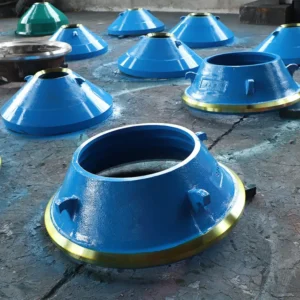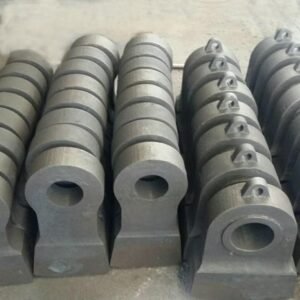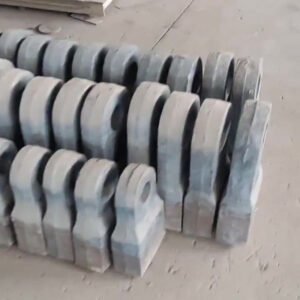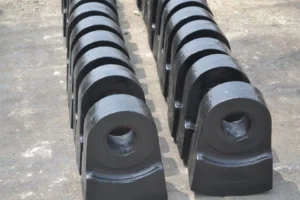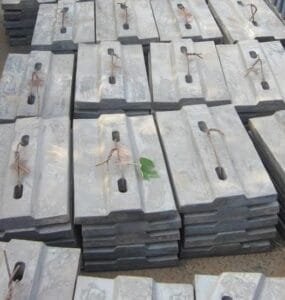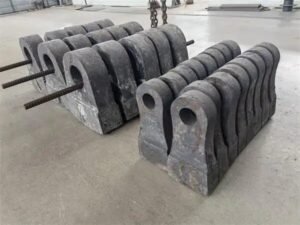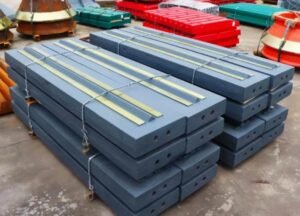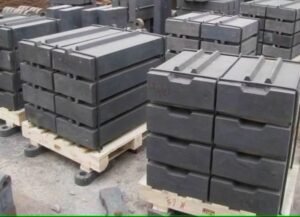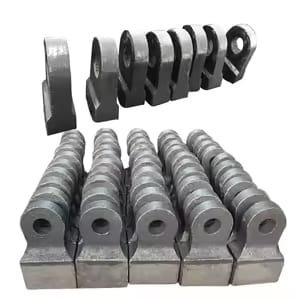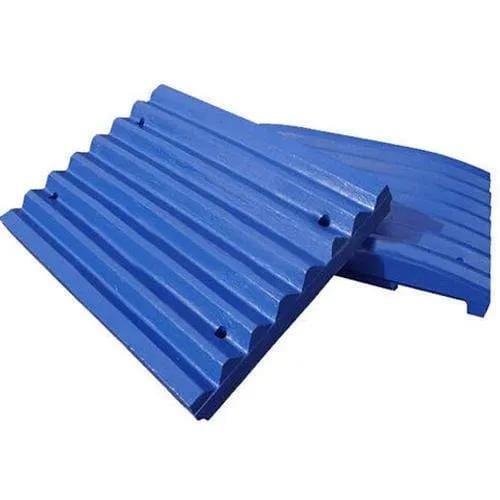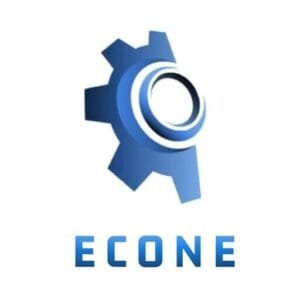Best and Right Jaw Crusher Plate Materials
Introduction
Jaw crusher plates play a vital role in crushing efficiency and durability. Selecting the Best and right jaw crusher plate material can impact wear resistance, cost-effectiveness, and overall machine performance. Two of the most widely used materials are manganese steel and alloy steel.
In this guide, we will compare manganese vs. alloy steel jaw plates, discuss their pros and cons, and help you determine which material is the best fit for your crushing operation.
1. Understanding Jaw Crusher Plate Materials
Jaw crusher plates endure extreme pressure and friction during crushing operations. The ideal material must balance wear resistance, toughness, and impact strength to withstand the demands of crushing hard materials such as rocks, ores, and concrete.
Key Factors for Choosing the Right Jaw Plate Material:
- Hardness & Strength: Must resist high impact forces without breaking.
- Wear Resistance: Prolongs lifespan by reducing material loss over time.
- Toughness & Ductility: Prevents fractures and ensures durability.
- Cost & Availability: Must provide good value and be easily sourced.
The most common choices are high manganese steel and alloy steel. Let’s analyze their properties in detail.
2. Manganese Steel Jaw Plates
2.1. Composition & Characteristics
Manganese steel, also known as Hadfield steel, is a high-strength, work-hardening material. Its key component is manganese (Mn), usually ranging from 12-14% or even up to 18-21% in high-impact applications.
Properties of Manganese Steel:




2.2. Best Applications for Manganese Steel Jaw Plates Materials
- Primary crushing of hard rocks (e.g., granite, basalt)
- Mining and quarrying applications
- Heavy-duty crushing environments
Manganese jaw plates work best in conditions where high impact forces are present and where materials are hard and abrasive.
3. Alloy Steel Jaw Plates
3.1. Composition & Characteristics
Alloy steel jaw plates are made by mixing carbon steel with additional elements such as chromium (Cr), molybdenum (Mo), nickel (Ni), and vanadium (V) to improve hardness, strength, and wear resistance.
Properties of Alloy Steel:




3.2. Best Applications for Alloy Steel Jaw Plates
- Secondary & fine crushing – Works well with smaller, more uniform materials.
- Low-impact, high-pressure crushing – Suitable for concrete and softer ores.
- Recycling operations – Effective for crushing non-abrasive materials.
Alloy steel plates excel in situations where abrasion resistance is more important than impact resistance.
4. Manganese vs. Alloy Steel: Side-by-Side Comparison
| Feature | Manganese Steel Jaw Plates | Alloy Steel Jaw Plates |
|---|---|---|
| Hardness | Medium (Work-hardening) | Higher Initial Hardness |
| Wear Resistance | Increases Over Time | Consistently High |
| Impact Resistance | High (Shock-absorption) | Lower (May Crack Under High Impact) |
| Abrasion Resistance | Good for coarse crushing | Better for fine crushing |
| Best For | Hard, abrasive rocks | Softer materials & fine crushing |
| Lifespan | Medium to Long (Depends on Work-hardening) | Long (If Used in Correct Application) |
| Cost | Lower initial cost | Higher initial cost |
Manganese steel is better for high-impact applications, while alloy steel is more wear-resistant and ideal for precise, secondary crushing operations.
5. How to Choose the Best Jaw Crusher Plate Materials
5.1. Consider Your Crushing Application



5.2. Evaluate Cost vs. Longevity
- Manganese plates have lower upfront costs but may require more frequent replacements.
- Alloy steel plates last longer but have higher initial costs.
- If downtime is expensive, investing in longer-lasting plates can reduce long-term costs.
5.3. Check Manufacturer Quality
Not all jaw plates are created equal. Choose a supplier that offers:
- Precision casting for a perfect fit
- Certified materials with proper chemical composition
- Reliable post-sale support
6. Conclusion: Which Material is Right for You?
The choice between manganese steel vs. alloy steel depends on your specific crushing application, budget, and wear resistance needs.
- Choose manganese steel if your crusher is handling hard, high-impact materials such as rocks and minerals.
- Choose alloy steel if your operation involves abrasive but less impact-intensive crushing, such as secondary crushing of softer materials.
By selecting the right jaw crusher plate material, you can significantly improve crushing efficiency, extend equipment lifespan, and reduce operating costs.
For expert recommendations or high-quality jaw plates, contact a reliable supplier today.

